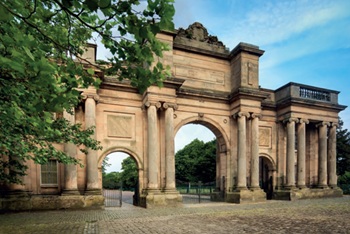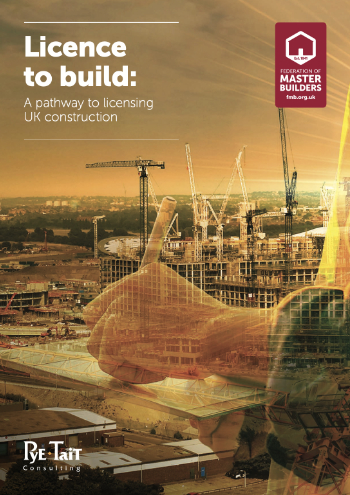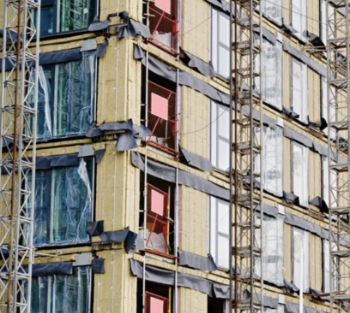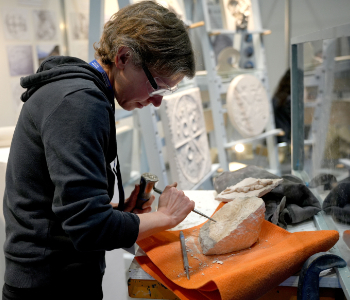Escalator
Contents |
[edit] Introduction
Escalators are mechanical devices used for transporting people vertically between different levels of buildings. Typically, they take the form of a moving staircase, consisting of a 'chain' of single-piece aluminium or stainless steel steps guided by a system of tracks in a continuous loop.
Escalators are commonly used in buildings where the movement of a large number of people is required, such as shopping centres, airports, transit systems, exhibition halls, hotels, arenas, public buildings, and so on.
They occupy the same physical space as a staircase, generally have no waiting time (other than during periods of congestion), allow a greater flow of people, and can be more practical than lifts. It is also possible for people to walk up or down escalators, if they are in a hurry, or if they break down.
A variation of the escalator is the moving walkway, which transports people horizontally.
[edit] History
The first escalator was patented by two Americans, Leamon Souder and Nathan Ames, in the mid-19th century. However, their patented designs were never manufactured.
It wasn’t until the early-20th century that a working prototype designed by Charles Seeburger and Jesse Reno was produced. Their working model gained a lot of attention and was first installed in New York City’s department stores. In 1910, Seeburger and Reno sold their invention to the Otis Elevator Company.
[edit] Speed
The speed of escalators is constant and is generally around 0.3-0.6 m (1-2 ft) per second. This translates to around 27-55 m (90-180 ft) per minute. An escalator moving an average of 44 m (145 ft) per minute can transport over 10,000 people per hour, which is a considerably higher capacity than a standard lift system.
[edit] Configurations
There are three basic configurations that are used for most common escalator systems:
- Parallel: Escalators positioned side-by-side, moving in opposite directions.
- Criss-cross: Escalators moving in one direction are ‘stacked’, minimising space requirements.
- Multiple parallel: A bank of two or more escalators, with differing directions.
[edit] Design considerations
There a number of factors that affect the design of escalator systems, including:
- The vertical and horizontal distance to be spanned.
- The location.
- Other building infrastructure.
- Traffic patterns.
- Carrying capacity.
- Safety considerations.
- Aesthetic preferences.
[edit] Escalator components
The following components make up an escalator system:
[edit] Landing platforms
These contain the curved sections of the tracks, in addition to the gears and motors. The floor plate provides space for users to stand before stepping onto the moving steps. The comb plate has a series of cleats (like the teeth of a comb), that mesh with matching cleats on the edges of the steps and minimise the gap between the stair and the landing.
[edit] Truss
The structure that bridges the lower and upper landings, and carries the straight track sections. Steel or concrete supports connect the ends of the truss to the top and bottom landing platforms.
[edit] Balustrade
This is the structure supporting the handrail of the escalator and can be made of metal, sandwich panels or glass.
[edit] Handrail
The handrail moves courtesy of a chain connected to the main drive gear by a series of pulleys. It is generally made from a blend of synthetic polymers and rubber, and is designed to be very durable.
[edit] Tracks
The step-wheel track for the front wheels of the steps, and the trailer-wheel track for the back wheels of the steps, cause the steps to form a staircase as they move from under the comb plate.
[edit] Steps
These are typically solid and made of die-cast aluminium or steel. They are cleated with comb-like protrusions that mesh with the comb plates. The steps are linked by a continuous metal chain that forms a closed loop.
The steps, connected in series, always step level as they move. The steps create a flat platform at both the top and the bottom of the escalator by collapsing on each other. This works by way of the two sets of wheels on each step. The upper set of wheels are connected to the rotating chains, pulled by the gears at the top of the escalator. The lower set of wheels follow behind and just glide along on their track.
[edit] Motor
Escalators are driven by a motor and chain system inside the truss. At its core are a pair of chains looped around two pairs of gears. The gears at the top of the escalator are turned by an electric motor, which in turn rotates the chain loops. The electric motor also powers the moving handrail which is looped around a series of wheels and is configured so that it moves at a similar speed to the steps.
[edit] Related articles on Designing Buildings Wiki
Featured articles and news
The world’s first publicly funded civic park.
Exploring permitted development rights for change of use
Discussing lesser known classes M, N, P, PA and L.
CIOB Art of Building 2024 judges choice winner
Once Upon a Pass by Liam Man.
CIOB Art of Building 2024 public choice winner
Fresco School by Roman Robroek.
HE expands finance alliance to boost SME house building
Project follows on from Habiko public-private place making pension partnership for affordable housing delivery.
Licensing construction; looking back to look forward
Voluntary to required contractors (licensing) schemes.
A contractor discusses the Building Safety Act
A brief to the point look at changes that have occurred.
How orchards can influence planning and development.
CIOB Construction Manager of the Year award
Shortlist set to go head-to-head for prestigious industry title.
HSE simplified advice for installers of stone worktops
After company fined for repeatedly failing to protect workers.
Co-located with 10th year of UK Construction Week.
Time for knapping, no time for napping
Decorative split stone square patterns in facades.
A practical guide to the use of flint in design and architecture.























